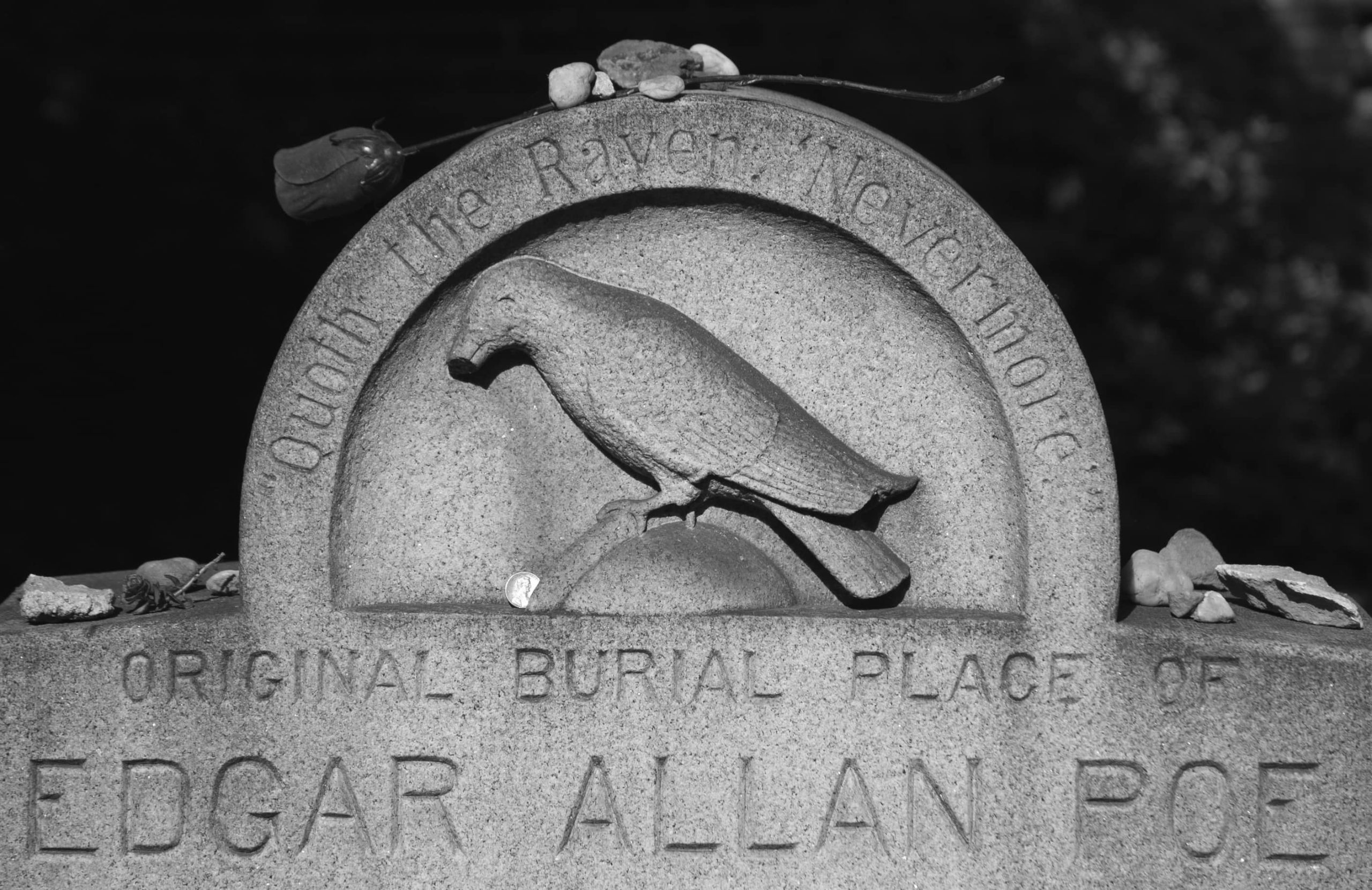(Originally published at Kendall Reviews.)
I’ve recently been reading Clive Barker’s first three volumes of the Books of Blood on the recommendation of the great and only Gavin Kendall. This collection is somewhat legendary, and whilst I’m pleased to say that it did live up to the immense expectation placed upon it, I also have to confess that I do prefer Barker’s later work; I feel I chime a lot more with Barker’s weird and wondrous mode of expression—his fantastical and phantasmagorical leanings—than his gore and horror. That being said, some of the stories in the Books of Blood raised every hair on my arm, and it’s easy to see how they established his reputation as one of the greatest horror writers of all time.
Perhaps my favourite story from the first three volumes, or perhaps the one that has caused me the most sleepless nights is “The New Murders in the Rue Morgue,” something of a literary sequel to Edgar Allan Poe’s “The Murders in the Rue Morgue,” originally published in 1841. Barker describes Poe as “the greatest horror writer in the world” in his introduction to the Books of Blood and “The New Murders” is not the only story in his collection that homages Poe. His tale, “Dread,” about a university student conducting experiments on his colleagues to find where the source of fear lies, echoes “The Pit and The Pendulum” in more ways than one.
Whilst you can undoubtedly read Barker’s entry in isolation, I could not resist the lure of curiosity and going back to re-read the original Poe story. The two tales are incredibly closely knit, despite their wildly different generic leanings. Both engage with similar themes, one of the most important of which is “truth.” What is true? Where can we find the truth? Does it matter if a story is true or not provided it has had an effect on someone?
Poe’s detective, Dupin, observes, “Truth is not always in a well. In fact, regards the more important knowledge, I do believe that she is invariably superficial. The depth lies in the valleys where we seek her, and not upon the mountain-tops where she is found.” In other words, the things worth discovering are often discovered in the nadirs of life, on the journey, not at its peaks. It’s clear Barker took this to heart, as it is taken forward and elaborated on in “The New Murders,” where we plunge into a valley of almost abyssal depths in order to witness the ugly “truth.” Indeed, Barker’s story leaves us questioning whether the truth is even something to be desired.
Poe’s story is a detective tale; it reads very much akin to the work of Arthur Conan Doyle, though the savageries of the murders in the Rue Morgue are beyond anything encountered in Holmes’ canon. Like any good detective tale, Poe’s yarn leaves us uncertain what has really happened until the very end. Over the course of the investigation, the methodical detective Dupin (like Holmes, a model of reason in the face of unreasonable acts) bring us face to face with something startlingly and disturbingly inhuman. The solution to the tale is novel and intriguing: no human committed the atrocity, but an orangutang. It would be easy, in the hands of a lesser writer, for this to be almost comedic. But Poe’s slow unveiling of the creature is disturbing on many levels. He conveys the sense of the animal’s unbridled power and cunning, whilst never stepping over the mark and demonising it. There are a few disturbing details Poe throws in which leave their mark on the reader, and evidently left their mark on a young Barker. For example, the orangutang sat in front of the mirror with a razor, attempting, clumsily, to shave like its master. What Poe meant by this is uncertain as he only offers us a glimpse, but it is a memorable moment and we shall return to its full implications later.
One need only look at the recent blockbuster Godzilla vs. Kong, and the many entries in the Planet of the Apes series, to realise that the myth of the mighty monkey or ape is very much alive and still fascinating to us today. It is easy to understand why, especially in the light of The Origin of the Species. We see in apes something altogether alien from ourselves, but also part of us. In some ways, this chimes with the biblical idea of a “fallen state.” Adam and Eve were naked, like animals, in the garden. They had no shame. They were perfect physical specimens. They had no knowledge of “good and evil.” In many ways, this could be read as a cipher for the fact they were intelligent apes of some form. But then, of course, they “fall” by becoming truly human. They experience shame at being naked. They lose their natural instincts. They are banished from the wild and beautiful garden forever. In this way, apes represent an Edenic state for humankind predating the burden of self-awareness.
Barker is clearly fascinated by what some term “the leap” (aka, from animal to thinking human). He has written about animals evolving into humans several times, most prominently in the form of Raul in his (as yet unfinished) Art trilogy. Raul is an ape who touches the Nuncio, a magical substance that triggers evolution. In doing so, he essentially becomes human. In “The New Morgue” we perhaps see Barker’s early “take” on whether an ape could, or would, make the leap from animal to something else. He takes the unsettling image of the orangutang in front of the mirror trying to shave, and follows it down the rabbit hole of imagination to a destination that is so deeply unsettling it is hard to know where to begin describing it (Barker’s work resembles poetry in that respect, in that it cannot be distilled, only experienced). Whereas Poe’s story horrifies us because we come face to face with something primeval, something altogether not human, Barker’s story is precisely the reverse. It shows us that the only true horror is in being human.
Barker’s tale is not a detective story, and so by midway through we know who has committed the “new” murders. What we don’t know is the “why,” or in other words, the “truth.” At the outset of the tale, Lewis Fox, the grand-nephew of the great detective Dupin, claims that in his old age he increasingly doesn’t care about whether something is true or not, “It was a tired debate: reality or illusion.” However, it becomes clear as Lewis discovers more threads of the dark tapestry unfolding around him that he does care about the truth. In fact, he becomes obsessed by it and has to know.
What awaits him is the surprising revelation he is in many ways to blame for all that has happened. In sharing the stories of his grand-uncle’s exploits, down to the last detail of the orangutang in the mirror, he “inspired” (if that is the right word) his friend Phillipe to try and “humanise” an ape, with disastrous consequences. His insistence on the reality of a fiction has manifested a real horror. In Barker’s universe, reality is being nightmarishly created by fiction, not the other way around.
In a dingy room below ground, Lewis witnesses the full flowering of the dark seed he planted. The ape has learned to shave to appear human, to walk (though its gait is odd). It has learned to seduce vulnerable and beautiful women by offering them drugs they’re dependent on. It has learned how to dress, how to kill, and how to fuck. In the last haunting moments of the story, the ape speaks:
“To his back, the ape spoke, saying his name. But this time, instead of it coming out as a sort of grunt-word, its simian palate caught Phillipe’s inflexion with unnerving accuracy, better than the most skilful of parrots. It was Phillipe’s voice, perfectly.
‘Lewis,’ it said.
Not pleading. Not demanding. Simply naming, for the pleasure of naming, an equal.”
There are several things to unpack here. Firstly, not only did Phillipe “train” the ape, but also introduced him to his young lover, Natalie, who began to have a physical relationship with the ape. Phillipe gave the ape the “forbidden fruit,” then. Furthermore, I don’t believe the ape assuming Phillipe’s identity is merely an act of revenge or disguise, it’s a commentary on the Shadow Self, and how, if we feed it too much, it becomes us. Phillipe commits suicide by the end of the story, unable to bear what he has done and seen. The ape assumes his place. Society doesn’t notice the difference.
Secondly, Barker tells us that the ape—or perhaps we should start calling him Phillipe?—is Lewis’ equal. It is of note that Adam, aka the “first” man, named the animals. The ape naming Lewis then might be considered a reversal of established cosmology and order. The horror of this moment is twofold: firstly in realising the truth of how little separates us from the animal, and secondly in realising the danger of human nature and our obsession with “fictions.”
Yet no less dangerous is our pursuit of the “truth,” and reason is shown to be utterly treacherous throughout “The New Murders.” It is significant that in the final lines of the story the new “Phillipe” is ascending the steps of the Sacré Coeur as a “new day” is beginning. This is undoubtedly symbolic on a number of levels: of rebirth, of a new era. However, I think that Barker is ultimately showing us that we must embrace both fiction and fact, as well as their intersection, because at either extremity lies destruction: too much reason means we cannot accept the strangest truths of the universe; too many fictions means we risk bringing things into the world that were better left out of it. This is perfectly encapsulated in the oxymoronical line, “He had caused it, with his dreams of fictional heroes, steeped in absolute reason.” Lewis commits suicide, unable to bear the reality of his manifested phantasm. He insists, to the woman bedding the new “Phillipe,” that “He’s not even human,” and in this way he spells his own doom. He insists on a “truth” where the reality is more complex; who is he to say that “Phillipe” is not human, anymore?
The middle road of fact and fiction, between reality and illusion, is surprisingly embodied by the ape himself, the only character aspiring to be more than their sum. It is interesting that Barker drops us a small detail in the hair-colour of the final woman: red. Once again he shows his occult leanings, as The Scarlet Woman was an archetypal construct often utilised by infamous sorcerer Aleister Crowley for sexual magick ceremonies (bearing in mind “Phillipe” and the red-woman consummate their love physically while Lewis watches). Crowley self-identified as the Beast of Revelations (a beast in man’s clothing, no less) and of course Revelations tells us that the apocalypse will be brought about by “the Beast and the Harlot,” the Harlot being the “Scarlet Woman.” There is a double-blind here, then. The Beast and the Harlot walk hand-in-hand at the end of Barker’s story, signalling the end of one world—of an era—and the dawn of a “new day.” But they are not villains or hellish scions. The beast is a beast, but it is also a man. The woman is a whore, but she is also a lady. There is no fiction, no fact, no reality, no illusion, there is only a narrow path to final transcendence of the sum of one’s parts, and into the sacred heart of God. Barker’s story is one of evolution, but the ending only serves to prove the ultimate evolution isn’t from beast to man, it’s from man to something else entirely.

